Fracture Body
Fracture body enables real-time persuasive destruction of objects. When collision with some body occurs, a destructible object is procedurally fractured into pieces, which in turn can also be fractured until the desired level of destruction is achieved. Fracture bodies are quite inexpensive type, and can be broken into a moderately large number of pieces.
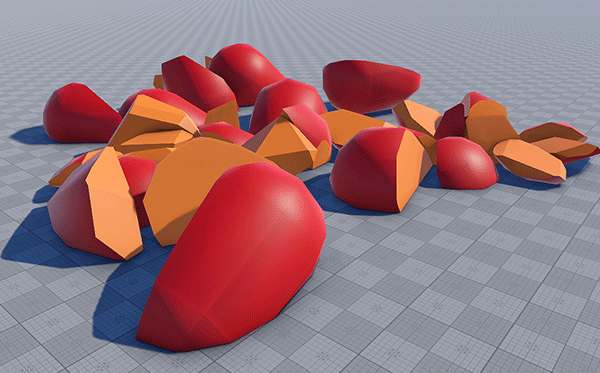
You can configure the fracture body either in the Editor or via code, however the type of fracturing and changing the body state to broken is defined only via code.
See also#
- BodyFracture class
- Fragment of the video tutorial on physics demonstrating procedural destruction of fracture bodies
Fracturing#
There are three patterns of fracturing:
These patterns determine fracture paths that are relevant to different mechanical properties of materials (e.g., its toughness and porosity). Fracture patterns are available for choosing on the script level.
Slicing#
Slicing is a fracture pattern separating the mesh volume into two pieces by a plane. The plane passes through a specified point of the body. Slicing angle is determined by a specified normal.
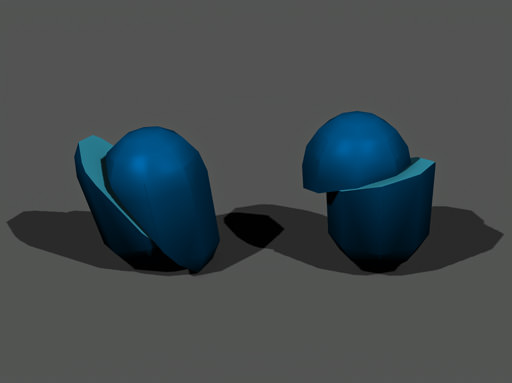
To slice a Fracture body use the createSlicePieces() method.
Cracking#
Cracking is a fracture pattern involving formation of radial cracks from the point of collision. All of the crack pieces slightly vary in size to ensure visual realism. Moreover, the mesh can be additionally fractured along concentric rings, simulating spread of the impulse. The thiner and more brittle the material is (e.g., glass), the more rings tend to be formed by fracturing. The specified distance between the rings is also randomly varied to provide convincing result.
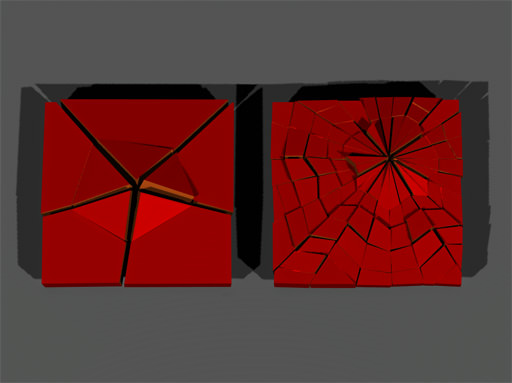
To crack a Fracture body use the createCrackPieces() method.
Shattering#
Shattering is a fracture pattern randomly dividing the mesh volume into the specified number of convex chunks.
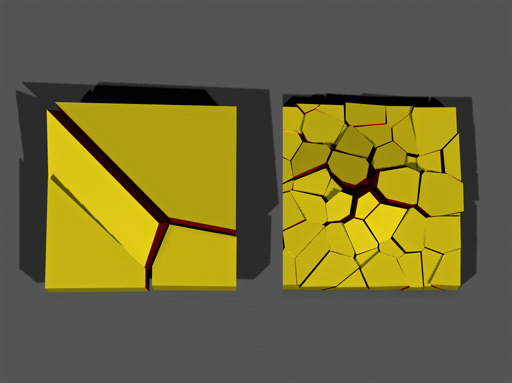
To shatter a Fracture body use the createShatterPieces() method.
Broken Body#
To make the body broken (sliced, cracked, or shattered), the Broken flag should be set for it. Unsetting this flag puts the fractured mesh back into unbroken state.
The broken body remains represented as one node in the nodes hierarchy. Generated fractured pieces are automatically represented as Fracture bodies and they inherit physical parameters of the fractured body (such as damping of linear and angular velocities, friction, restitution and masks).
Assigning a Fracture Body#
To assign a Fracture body to an object via UnigineEditor perform the following steps:
- In the World Nodes window, select Mesh Dynamic object to assign a Fracture body to.
-
Go to the Physics tab in the Parameters window and assign a physical body to the selected object by selecting Body -> Fracture.
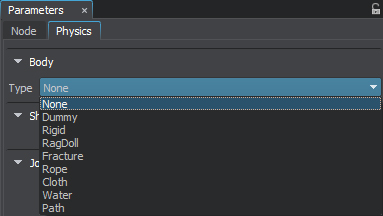
- Set body name and change other parameters, if necessary.
- Define the fracturing pattern and set the Broken flag via code.
Parameters#
Fracture body (as well as all the pieces it fractures into) is, in fact, a Rigid body that moves according to rigid body dynamics.
After the body was fractured, its mass is distributed among the pieces and they tumble down as rigid bodies would do.
In addition to the rigid body parameters available in accordance with the rigid body dynamics, the following Fracture body parameters are available for configuring:
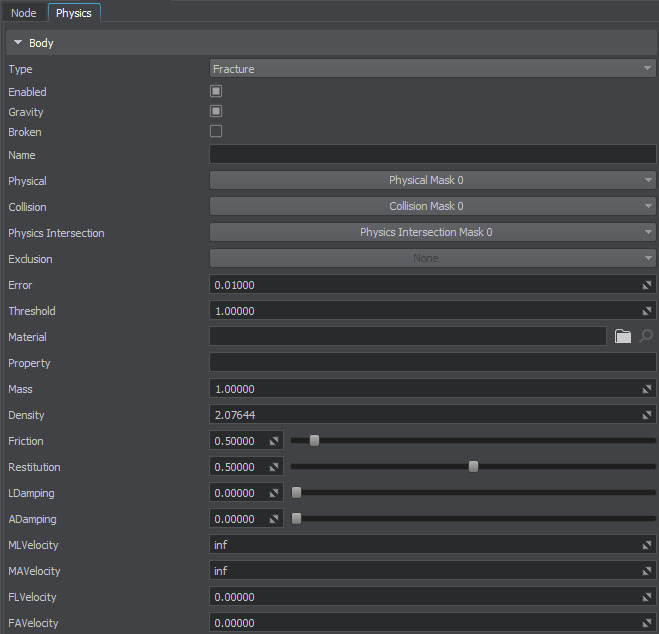
| Error |
Shape approximation error. Fracture body is always approximated with a convex hull, which may contain too much detail for collision geometry. As a rule, it is unnecessary, because a highly detailed shape does not provide noticeable visual difference while significantly affecting performance. Approximation error makes it possible to control the number of vertices in the resulting collision shape:
Notice
An autogenerated shape of a Fracture body is not displayed in the Shapes list on the Physics tab of the Parameters window. You can not remove it or assign any other shape to a Fracture body. |
|---|---|
| Threshold |
Volume threshold for fractured pieces. As the body is fractured, especially for several times, small pieces may start to hit the performance. Volume threshold determines the minimum volume for fractured pieces and thus controls the level of fracturing. All chunks that are smaller than the specified value, will not be generated.
|
| Material |
Set the material to be applied the the fracture surface. When the mesh is broken, it is necessary to set the material that will be applied to all newly created fracture surfaces. Those faces of fracture pieces that were external, keep the initial material. |
| Property |
Set the property for all fracture surfaces that come into existence when the mesh is broken. They define the game behavior and additional physical properties, however, body parameters override them. |
| Density |
Density of the body defined as its mass per unit volume. Density determines buoyancy of the body in accordance with Archimedes' principle. The higher the density, the less tendency a body has to float. |
| Friction | Friction coefficient of the body, enables modeling of rough rubbing of surfaces. The higher the value, the less tendency the body has to slide. |
| Restitution |
Coefficient of restitution determines the degree of relative kinetic energy retained after a collision. It defines how bouncy the object is when colliding with another object:
|
Performance Optimization Tips#
Although the Fracture body is a relatively inexpensive type, in case of large number of fracture pieces, the impact on performance may become significant. To avoid performance drops the following tips can be used:
- Use volume threshold parameter to reduce the number of fracture pieces.
- Remove the pieces of a fractured body from the scene.
A code-based example, illustrating how to remove (fade with the time) the fracture pieces from the scene can be found in the Physics section of the UnigineScript samples.
The information on this page is valid for UNIGINE 2.20 SDK.